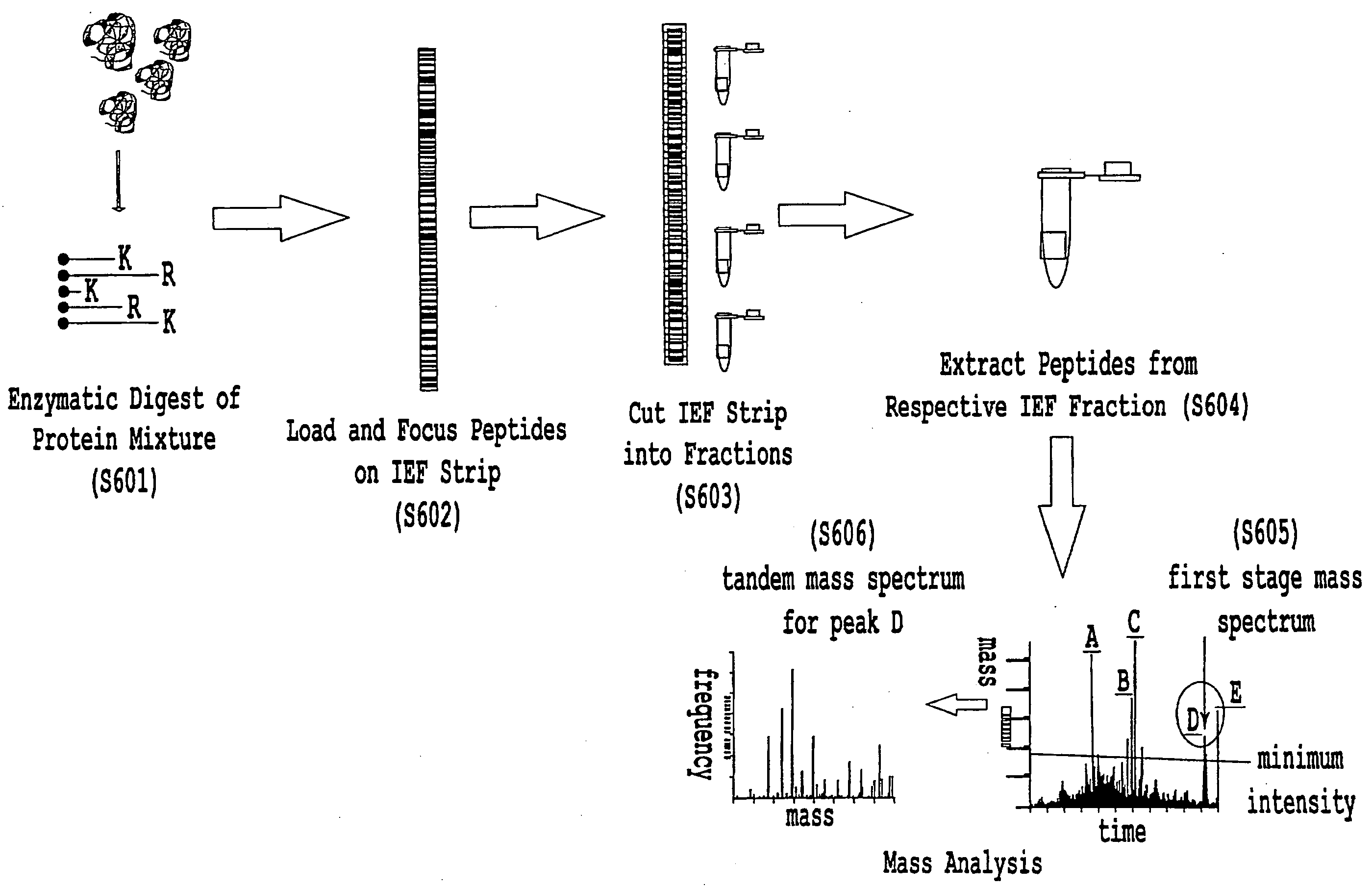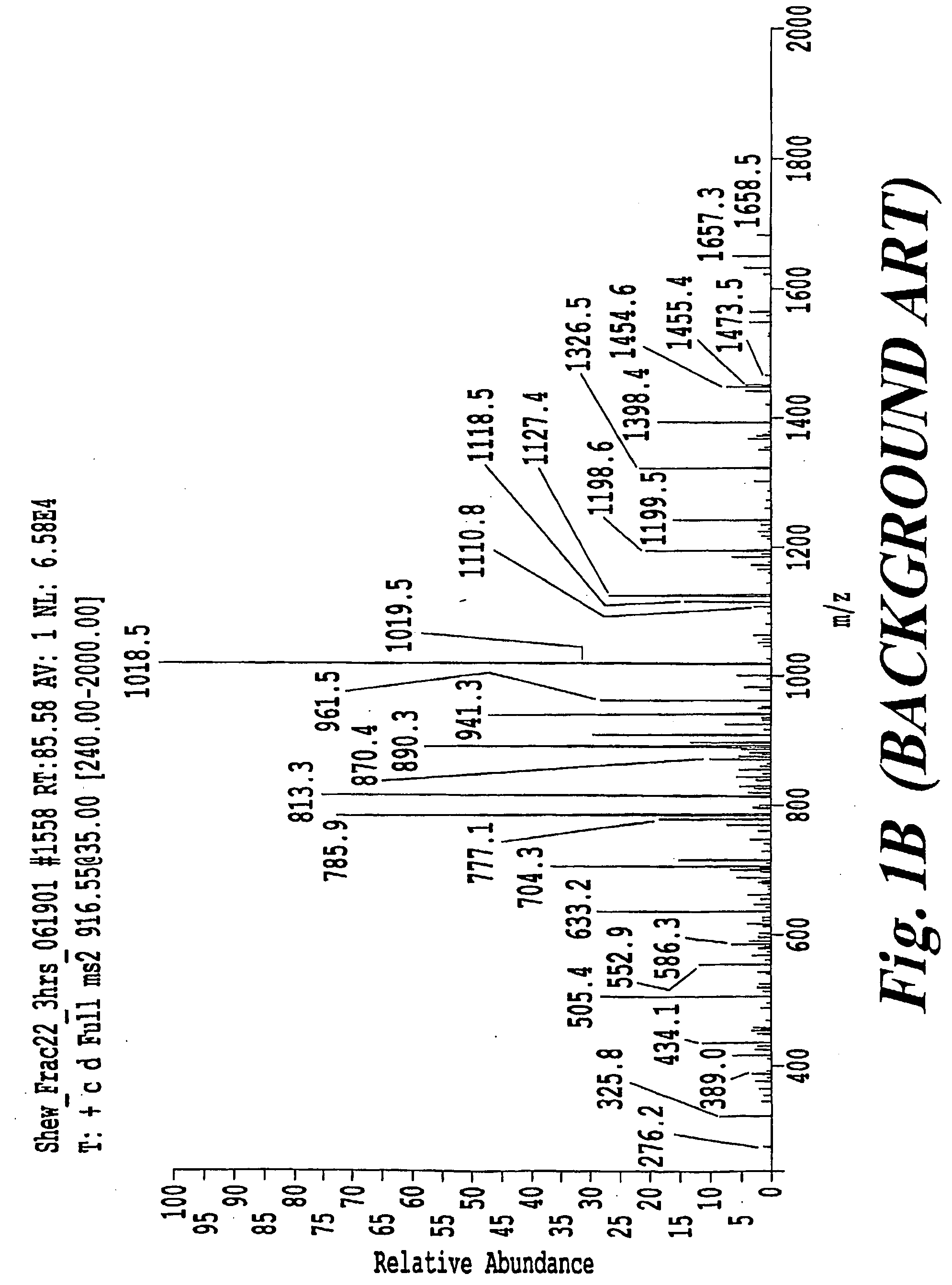Method and apparatus to reduce false positive and false negative identifications of compounds
a technology of compound identification and compound, applied in the field of compound identification methods and apparatuses, can solve the problems of low accuracy of compound identification, high number of inability to account for organism specific amino acid frequencies, etc., and achieve the effect of reducing false positive and false negative identifications
- Summary
- Abstract
- Description
- Claims
- Application Information
AI Technical Summary
Benefits of technology
Problems solved by technology
Method used
Image
Examples
first embodiment
[0044]As noted, an object of the present invention is to reduce false negative and false positive identifications of compounds; and to reduce false negative and false positive identifications of peptides based on their isoelectric point (pI) values. More particularly, the present invention can use in various embodiments the experimental pI range of peptides within a sample of interest as a second criterion for identification. For example, in the embodiments discussed below, the experimental pI range of peptides within a sample subjected to mass analysis is used to remove identifications that correspond to known peptides having respective pI values outside the estimated pI range.
[0045]FIG. 5 is a flowchart illustrating one example of specific steps used to generate and filter mass-based peptide identifications in accord with the first embodiment of the present invention. The steps described with reference to FIG. 5 are based, in part, on a work by some of the present inventors, showi...
second embodiment
[0072]FIGS. 10A, 11A, 12A, and 13A are four examples of mass spectra taken from derived peptide samples. FIGS. 10B, 11B, 12B and 13B are tables including the data of FIGS. 10A, 11A, 12A, and 13A, respectively. The following discussion is complementary and not limited to the pI based approach. More particularly, as further explained below, the following findings were verified via the application of a pI filter.
[0073]The first mass spectrum shown in FIG. 10A shows a typical mass spectrum for a mass range of 200-1200 amu and displays a number of prominent peaks. The data correlation predicts that the peptide in the mass spectrum is most likely K.GYETINDIK.G with a correlation score of 3.022, a respectable number. The match at the second best “peptide match” is a match found from the reverse search. A high correlation value for the reverse search hit suggests that random matching could be a problem for this data set.
[0074]Compare this result to the results in FIG. 11A where now the inte...
PUM
| Property | Measurement | Unit |
|---|---|---|
| Threshold limit | aaaaa | aaaaa |
| Threshold limit | aaaaa | aaaaa |
| Threshold limit | aaaaa | aaaaa |
Abstract
Description
Claims
Application Information
 Login to View More
Login to View More - R&D
- Intellectual Property
- Life Sciences
- Materials
- Tech Scout
- Unparalleled Data Quality
- Higher Quality Content
- 60% Fewer Hallucinations
Browse by: Latest US Patents, China's latest patents, Technical Efficacy Thesaurus, Application Domain, Technology Topic, Popular Technical Reports.
© 2025 PatSnap. All rights reserved.Legal|Privacy policy|Modern Slavery Act Transparency Statement|Sitemap|About US| Contact US: help@patsnap.com



